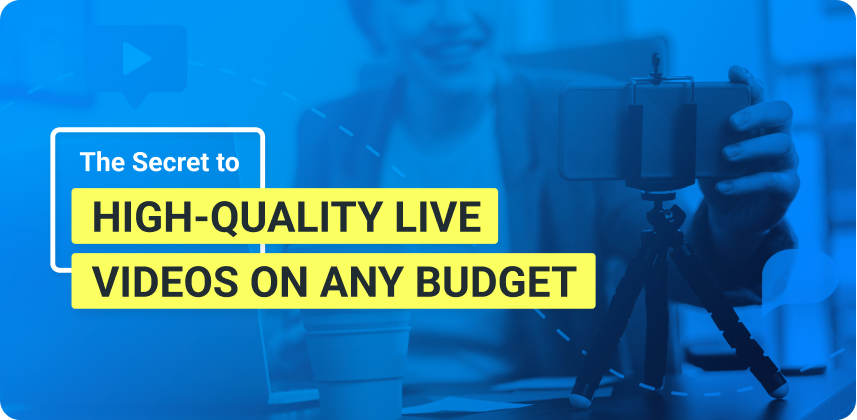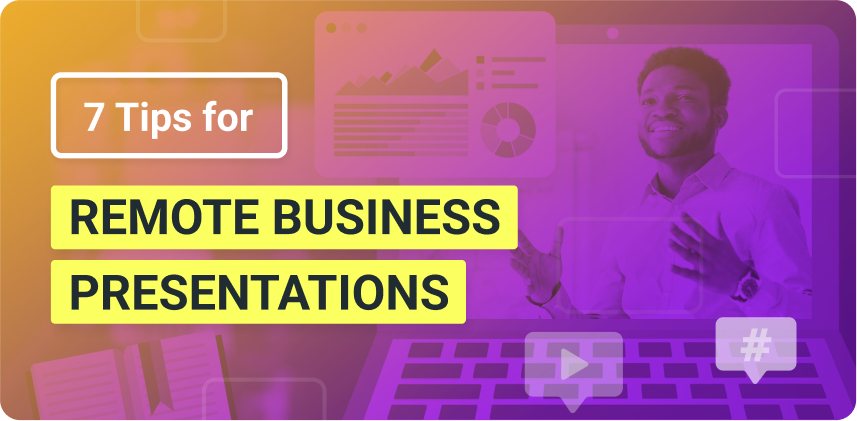Professional video conferences are harder to achieve than it seems, but when businesses take the time to enhance their video conferences, the results are fantastic.
Have you ever attended a video conference that felt like a complete waste of time? That might be more common than most people think. Without following some basic best practices, it’s hard to get good results with web conferencing. If you want to have professional video conferences and maximize your results, check out the list below. We’ve put together some of the best practices that can have a massive impact in your video conferencing.
Need more video conferencing tools? Download ManyCam for free today!
Why are video conferences so important for businesses?
Today’s world requires us to work faster than ever while achieving more significant results. The lack of effective communication is one of the most relevant drawbacks regarding productivity increase. Professional video conferences have proven to be part of the solution if done right.
Web conferences help businesses save time and money connecting entire teams with clients and one another. There’s no need for a physical location, no commuting, and every attendee can participate from wherever they are. Another advantage of professional video conferences is the low cost compared to other communication tools, especially considering international calls.
The best practices below will help you harness all the power of professional video conferences. When your team can have successful video conferences, productivity will increase, and results will improve.
Best practices to prep for professional video conferences
#1 Create an outline of the topics that will be covered
One of the professional video conferences’ most overlook best practices is to prepare a detailed outline of the meeting. Consider what you expect to achieve with the conference and go from there.
With an outline, you’ll be able to avoid one common video conference mistake and keep attendees focused on the subject at hand.
#2 Send an invitation to all participants and inform them of the goal of the meeting
After considering time zones and when it’s best to schedule the video call, it’s time to invite all attendees. Sending an invitation through Google Calendar or any similar tool might be a good idea if the others are familiar with the apps because you’ll be able to send reminders and increase attendance.
Also, if you want to maximize the efficacy of your video conference, let invitees in on the goal of the meeting and its main topics. When all attendees have the same goal in mind, it will be much easier to carry professional video conferences and achieve the results you need.
#3 Ensure that all attendees know how to use the technology involved
This is a best practice for professional video conferences applied particularly to internal meetings. In business, not all employees will have the same knowledge when it comes to technology. Therefore it’s up to leaders to ensure that everyone is on the same page.
It helps to have a video conferencing protocol or guidelines. For instance, you can determine that everyone will use one specific application, whether that’s Skype, Zoom or WebEx doesn’t matter, as long as it works well for internal communication. Many companies choose to have additional software applications to deliver professional video conferences, like ManyCam.
ManyCam is a live video software application that gives users tons of tools and features to enhance their video conferences and live streaming videos. Users can add picture-in-picture windows, share their screen, present slide decks, and much more. Best of all, with ManyCam Enterprise, businesses get access to multiple users and a user management platform.
Best practices before the online meeting
#4 Make sure your equipment works well
It’s been repeated time and time again, but it’s never enough. Testing is essential when it comes to professional video conferences or any live video. To test correctly, you can record yourself with ManyCam resources and watch the playback to see if everything works. Plus, you can do a dry run with one or more attendees. It takes 5 minutes and will spare you a lot of headaches.
If possible, right before the meeting, test one more time to be on the safe side and have backup equipment, in case things go south.
#5 Be there early
The meeting should start before its scheduled time. If you’re leading the conference, try opening up the virtual room a few minutes early. It will inspire others to be there early as well while giving everyone time to adjust their setups.
#6 Have everything you need nearby
A commonly overlooked best practice of professional video conferences is to place all the material you might need nearby. Whether that means organizing files on your computer or placing printed documents next to you, it’s not relevant. Having to get up and look for something in the middle of a web conference won’t be appreciated by your attendees.
During the webconference
#7 Make sure everyone can be seen and heard properly
The first few minutes of your video conference should be allocated to final testing. It’s a best practice to ensure all participants can be seen and heard. Participants can also mute their microphones until it’s their turn to speak, but that will vary depending on the business and type of meeting.
#8 Opening the video conference
Professional video conferences need to start on the right foot. For best results, at the beginning of the meeting, restate the goal of the meeting and provide the agenda. It’s vital to engage all participants from the get-go to ensure everyone is on the same page.
#9 Video conferencing etiquette
An issue often encountered during web conferences is multiple participants trying to speak at the same time, especially when there’s some delay between the connections. A best practice to minimize this is to establish cues to indicate that someone wants to speak; for example, raising hands is a typical visual signal.
What can you do after video conferences to improve results?
A fantastic way to increase the effectiveness of your professional video conferences is to prepare an email after the meeting with all the notes, setting up any deadlines or follow-ups necessary. If you fear that you might miss something during the session, it might be best to record it. So, you’ll be able to refer back to it afterward.
Some video conferencing applications allow you to record your meetings, or you can record it on ManyCam. Either way, with a recording it will be a lot easier to gather all the information and keep everyone on track.
How are you planning to maximize your professional video conferences?
Download ManyCam for free today!
Check out more professional live video tips:
What Are the Benefits of Video Conferencing? (and what do you need to get started)
Industries from healthcare, marketing, and education to financing and entertainment have experienced first-hand the countless benefits of video conferencing. At first, video conferences were… (Continue reading)
11 Practical Tips You Need to Create Successful Live Online Presentations
Business presentations play a massive role in success. Whether you are a business owner, consultant or freelancer, knowing how to deliver compelling live online presentations is an absolute must. We’ve put together 11 tips to help you create rich presentations that get you the results you need. (Continue reading)






